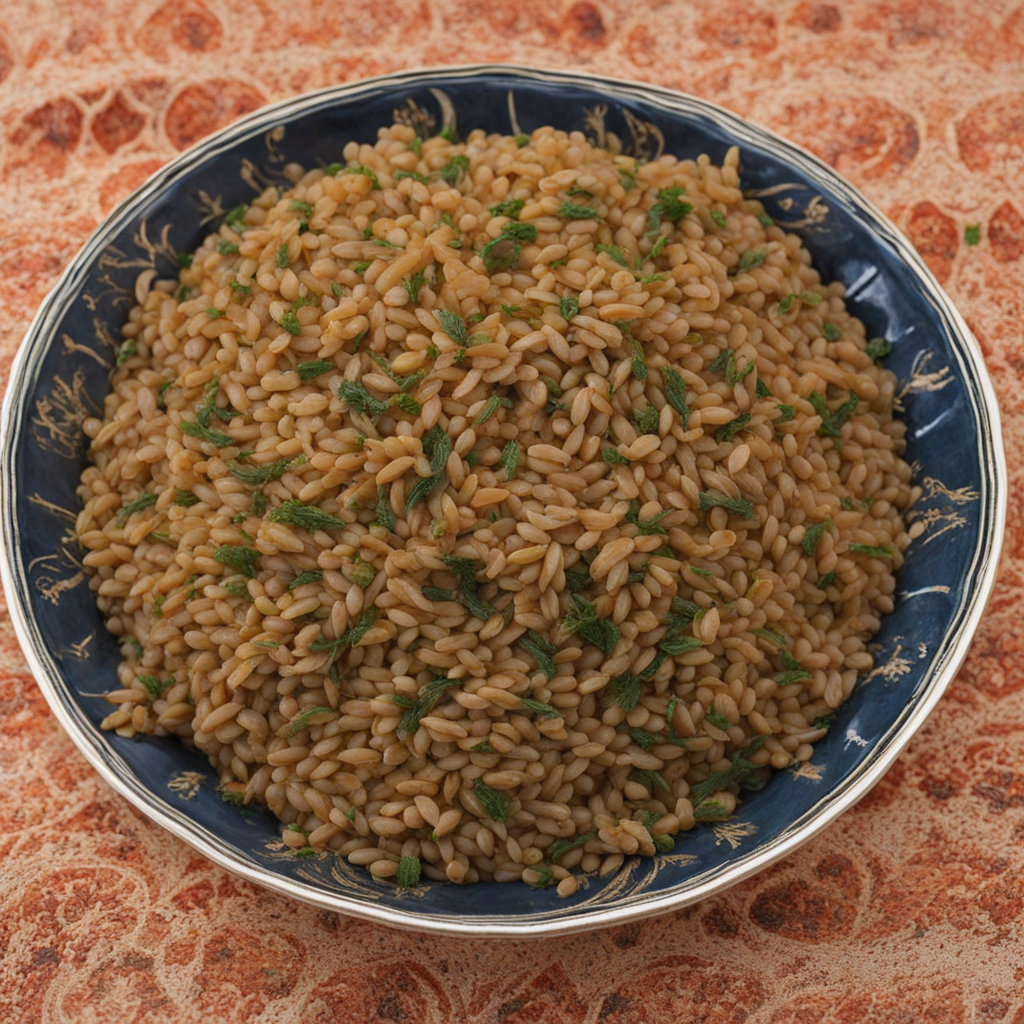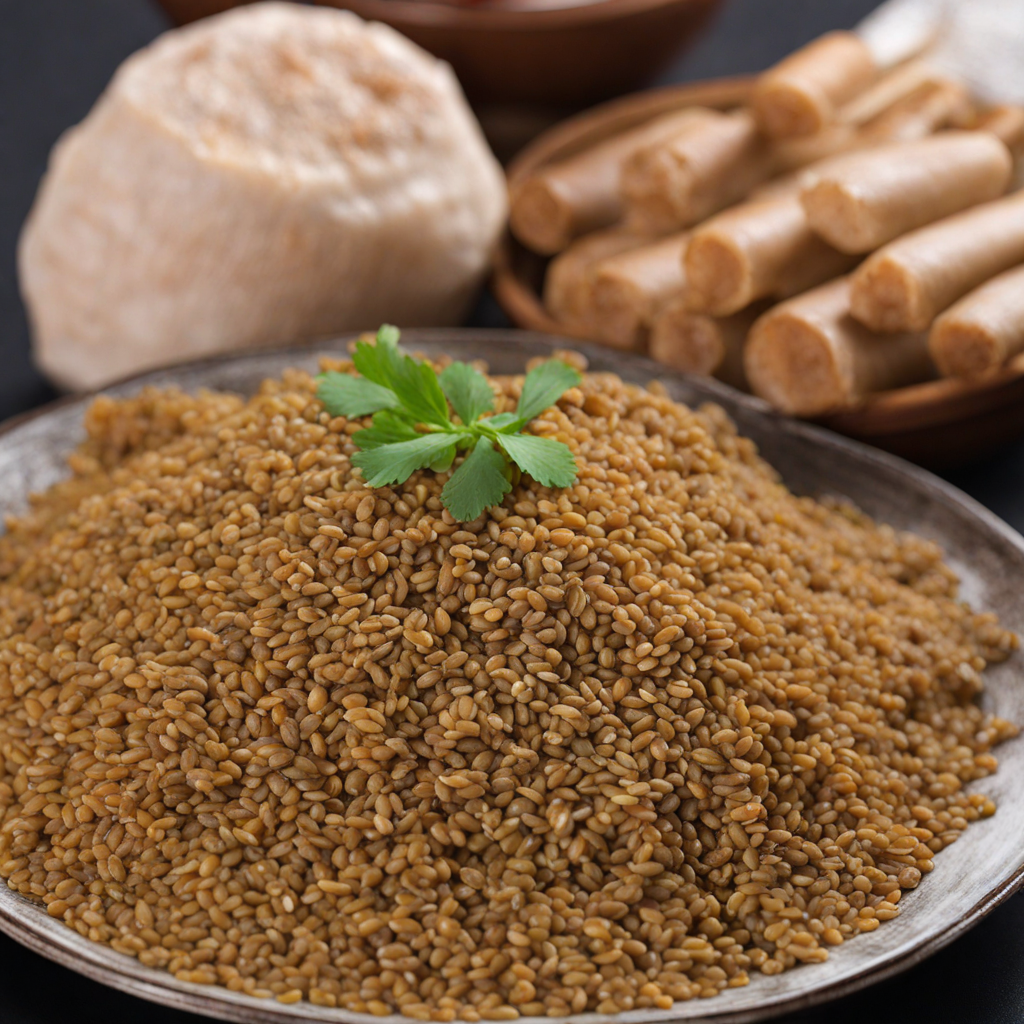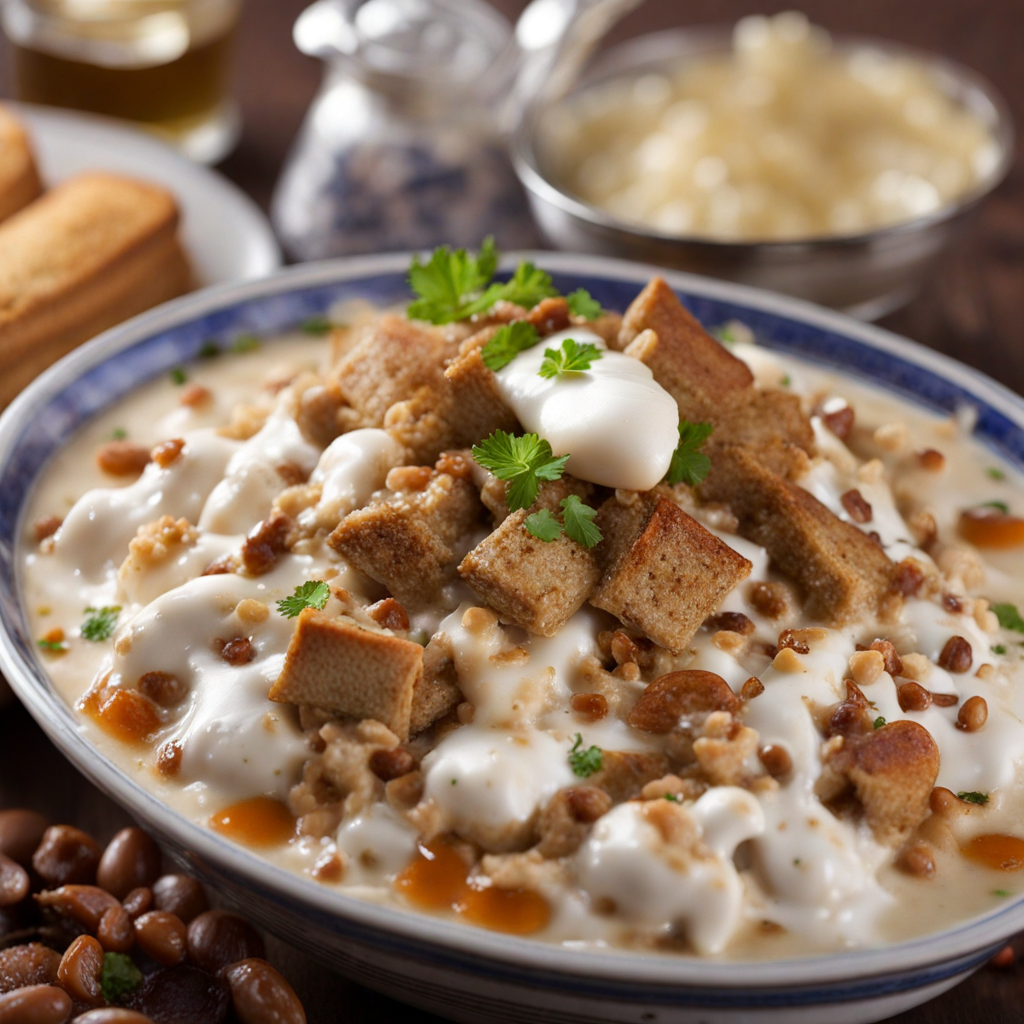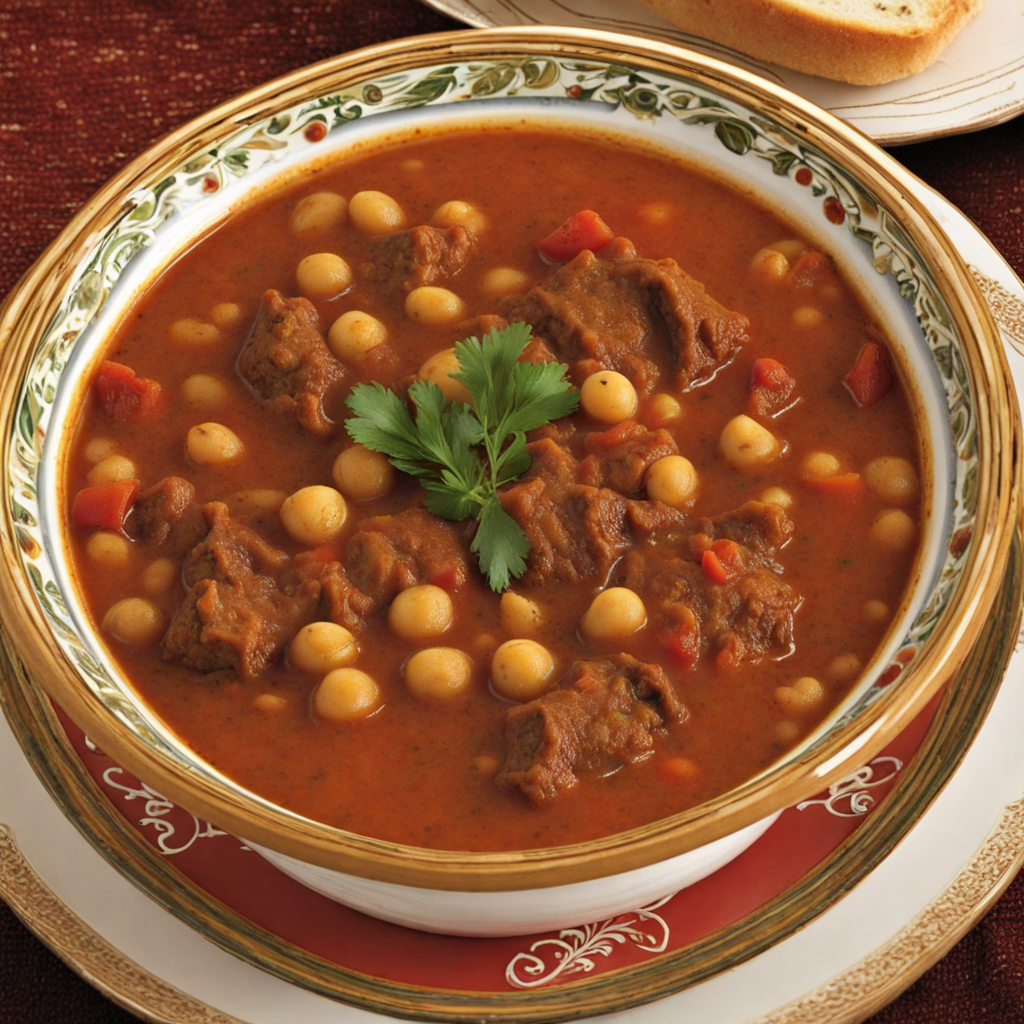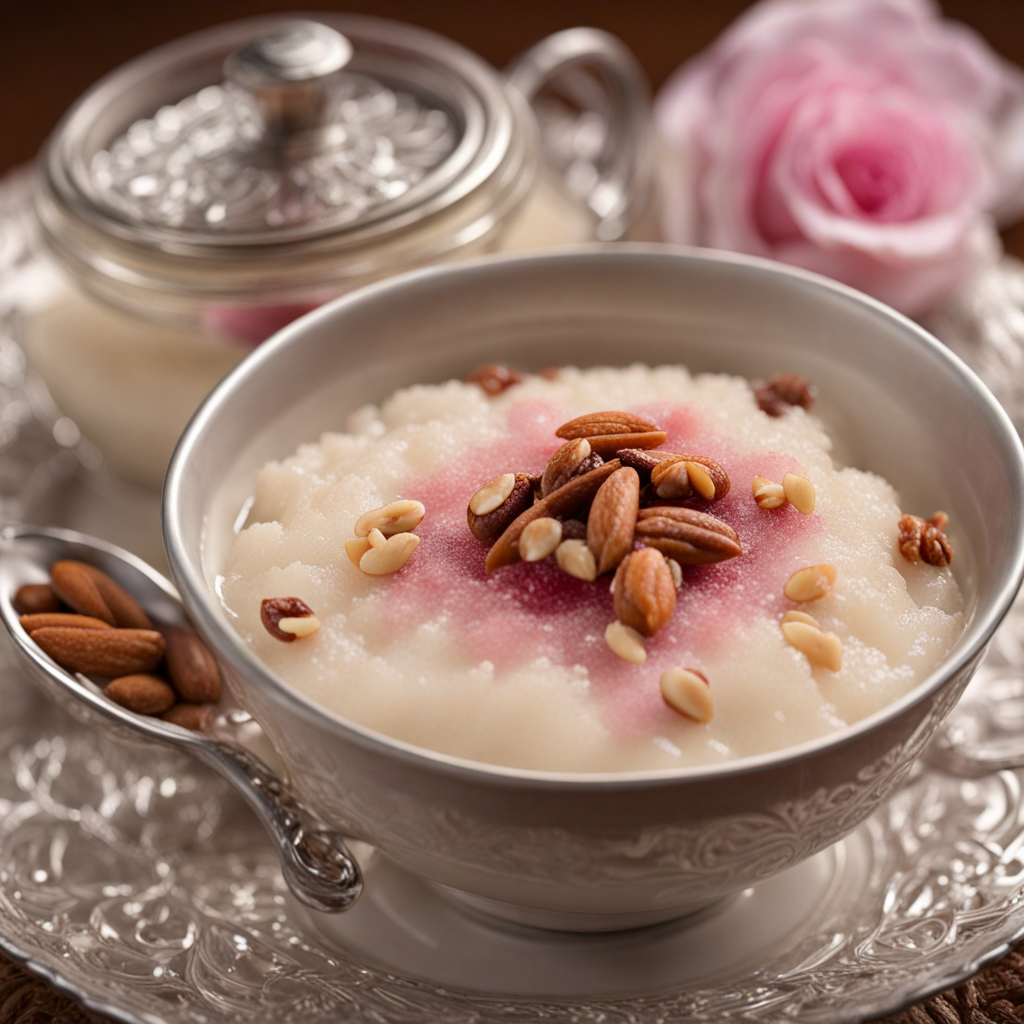Firik
Freak, or فريك, is a traditional Libyan dish that holds a significant place in the country’s culinary heritage. With roots that can be traced back to ancient times, this dish reflects the agricultural practices of the region and the importance of grains in Libyan cuisine. The name "freak" derives from the Arabic word for "green," referring to the process of preparing the grain before it is dried and transformed into a versatile ingredient. This dish is often enjoyed as a staple during meals and is particularly favored in festive occasions and family gatherings. The primary ingredient in freak is green durum wheat, which is harvested when the grains are still immature. The wheat is then subjected to a unique process known as "parching," where it is roasted over an open flame to enhance its flavor and aroma. After parching, the wheat is threshed and ground into coarse or fine particles, resulting in a grain that carries a nutty, earthy flavor. The texture of freak is slightly chewy, providing a satisfying contrast to the tender elements often served alongside it. In terms of preparation, freak can be cooked in various ways, but it is commonly prepared as a porridge or pilaf. The process begins with soaking the freak in water to soften it, followed by cooking it in broth or salted water until it reaches a tender consistency. It is often combined with other ingredients, such as meat (commonly lamb or chicken), vegetables, and spices, creating a hearty and wholesome dish. The use of
How It Became This Dish
Origins of فريك فريك, pronounced "freek" or "frikeh," is a traditional North African dish that has its roots deeply embedded in the culinary practices of ancient civilizations. The word "فريك" itself refers to green durum wheat that has been harvested early, roasted, and then ground into a coarse flour or left as whole grains. This method of preparing wheat dates back thousands of years and is believed to have originated in the regions of the Fertile Crescent, particularly in areas like ancient Mesopotamia and the Levant. The practice of harvesting young wheat and roasting it can be traced back to the nomadic tribes who roamed the lands of North Africa and the Middle East. They discovered that roasting the grains not only enhanced their flavor but also made them more durable for storage and transport. This preservation technique was vital for sustaining life during long journeys and harsh climates, making فريك an essential staple in the diets of these early communities. \n\n Cultural Significance In Libya, فريك is more than just a dish; it is a symbol of hospitality and cultural identity. Traditionally, it is prepared during festive occasions, family gatherings, and Ramadan, where its preparation becomes a communal activity. The act of making فريك often involves families coming together to harvest the wheat, roast it, and then grind it, fostering a sense of community and shared heritage. Eating فريك is often associated with special events, such as weddings and Eid celebrations, where it is served alongside a variety of meats and vegetables. The dish embodies the values of generosity and sharing, as it is common for families to prepare large quantities to feed guests. The flavors of فريك, often enhanced with spices such as cumin and coriander, along with rich meats like lamb or chicken, create a sensory experience that connects people to their cultural roots. \n\n Development Over Time As Libya's history evolved, so did its culinary practices. The introduction of new ingredients and cooking techniques influenced the traditional preparation of فريك. During the Ottoman Empire, which had a significant impact on Libyan cuisine, spices and cooking methods were introduced that transformed the way فريك was served. The incorporation of stews and hearty sauces became popular, leading to the creation of dishes like "فريك مع اللحم" (freek with meat), where the roasted wheat is cooked with tender meat and aromatic spices. The Italian colonization in the early 20th century also left its mark on Libyan cuisine. Ingredients like tomatoes and peppers were integrated into traditional recipes, enhancing the flavor profile of فريك dishes. This melding of culinary traditions reflects the resilience and adaptability of Libyan cooks, who embraced new influences while maintaining their cultural heritage. \n\n Modern Variations In contemporary times, فريك has gained recognition beyond Libya, becoming a staple in various Middle Eastern and Mediterranean cuisines. Its nutritional benefits, including high protein and fiber content, have made it a favored alternative to rice and other grains. As people become more health-conscious, فريك is often featured in modern diets, appearing in salads, pilafs, and even as a gluten-free flour substitute in baking. Many chefs and food enthusiasts have begun to experiment with فريك, using it in innovative ways that honor its traditional roots while appealing to modern palates. For instance, fusion dishes incorporating فريك with international flavors—such as stir-fries, casseroles, and grain bowls—have emerged, showcasing its versatility and adaptability in the global culinary scene. \n\n Farming and Sustainability The cultivation of the special green durum wheat used for فريك is a vital aspect of its history and cultural significance. Traditional farming methods have been passed down through generations, emphasizing sustainable practices that respect the land. In recent years, there has been a renewed interest in organic farming and heritage grains, leading to a resurgence in the cultivation of the specific varieties of wheat used for فريك. This focus on sustainability not only preserves the unique flavors and quality of فريك but also supports local economies and promotes biodiversity. As consumers increasingly seek out organic and locally sourced ingredients, the demand for فريك and its primary ingredient has grown, ensuring its place in both traditional and modern diets. \n\n Global Recognition As globalization continues to influence culinary practices worldwide, فريك has garnered attention from food lovers and chefs around the globe. Its unique flavor, texture, and nutritional profile have made it a popular ingredient in health-focused diets. Food festivals, cooking classes, and social media platforms have played a significant role in promoting traditional dishes like فريك, allowing them to reach audiences far beyond their regions of origin. Cookbooks, blogs, and culinary shows featuring North African cuisine have introduced فريك to a wider audience, inspiring home cooks to experiment with this ancient grain. The recent trend toward plant-based diets has further amplified its popularity, as فريك serves as a hearty and nutritious grain that can be easily incorporated into a variety of dishes. \n\n Conclusion In summary, فريك stands as a testament to the rich culinary history of Libya and the broader North African region. Its origins, cultural significance, and evolution over time reflect the interplay between tradition and innovation. As it continues to adapt to modern tastes while retaining its historical roots, فريك remains a cherished part of the Libyan culinary landscape and a symbol of the resilience and adaptability of its people. Through communal preparation and celebration, فريك not only nourishes the body but also fosters connections between generations, making it an enduring staple of Libyan identity.
You may like
Discover local flavors from Libya


